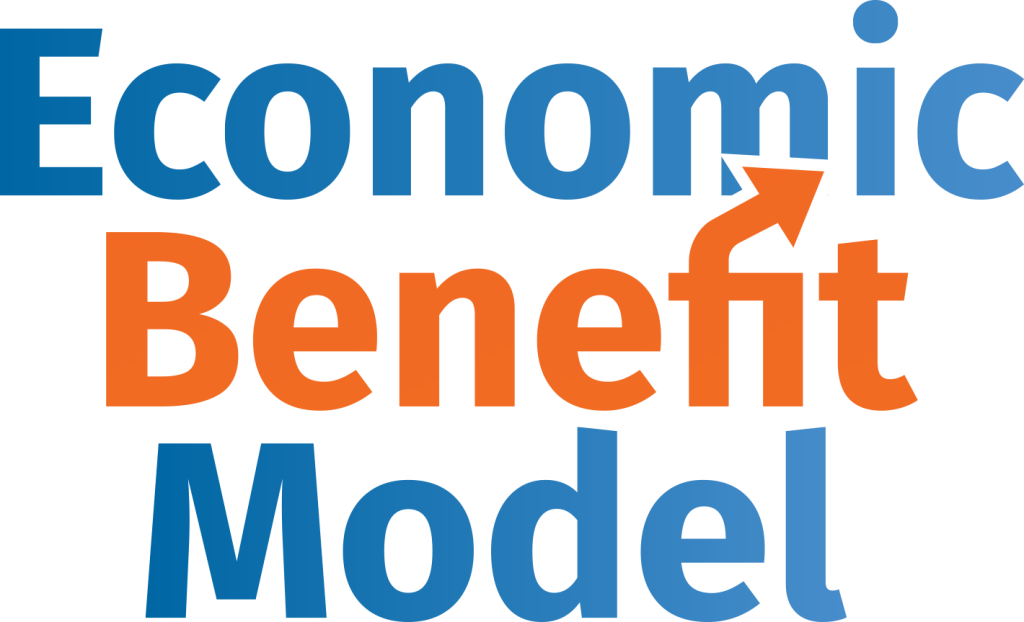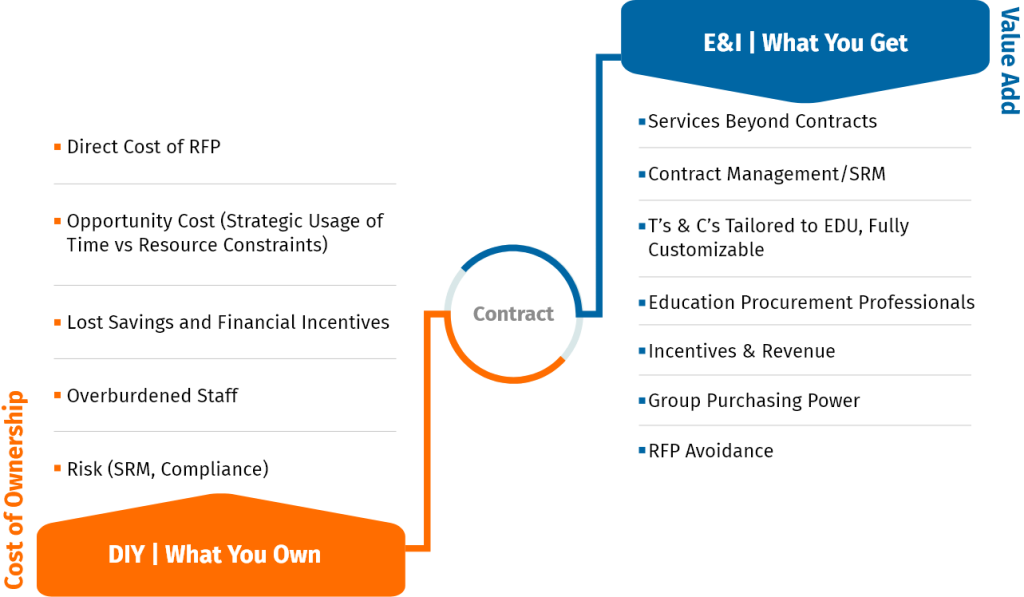E&I’s Economic Benefit ModelTM (EBM) is unique in the cooperative marketplace. The EBM takes a holistic approach to the overall value delivered to your school’s procurement supply chain. It focuses not just on savings – but on the Total Economic Benefit delivered. This benefit comprises the following key supporting pillars:
- Cost Reduction
- Cost Avoidance
- Incentives & Revenue
E&I’s Economic Benefit Model is a key component of every E&I contract and typically delivers overall cost savings in the range of 4-10% or higher.









